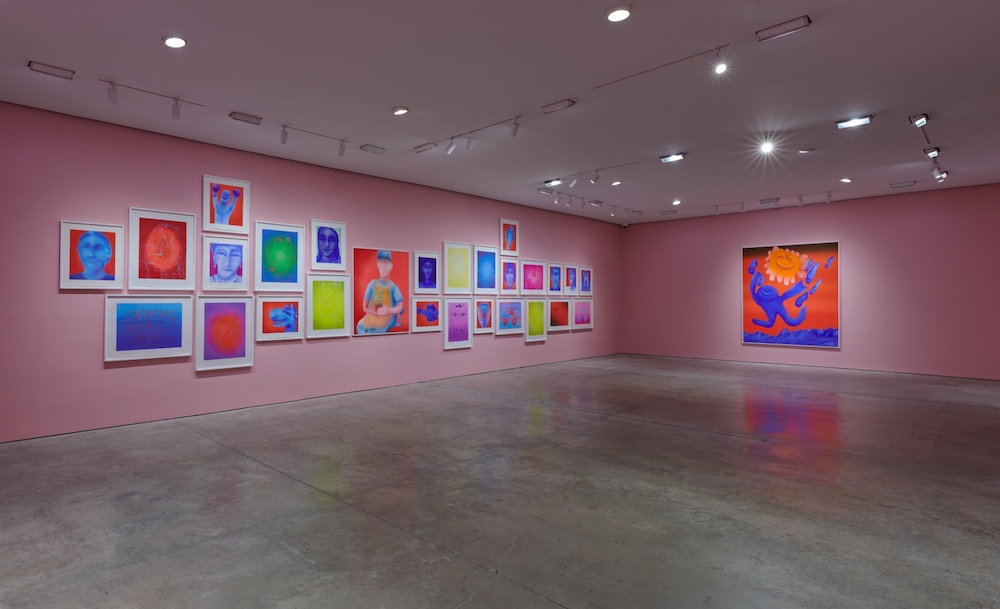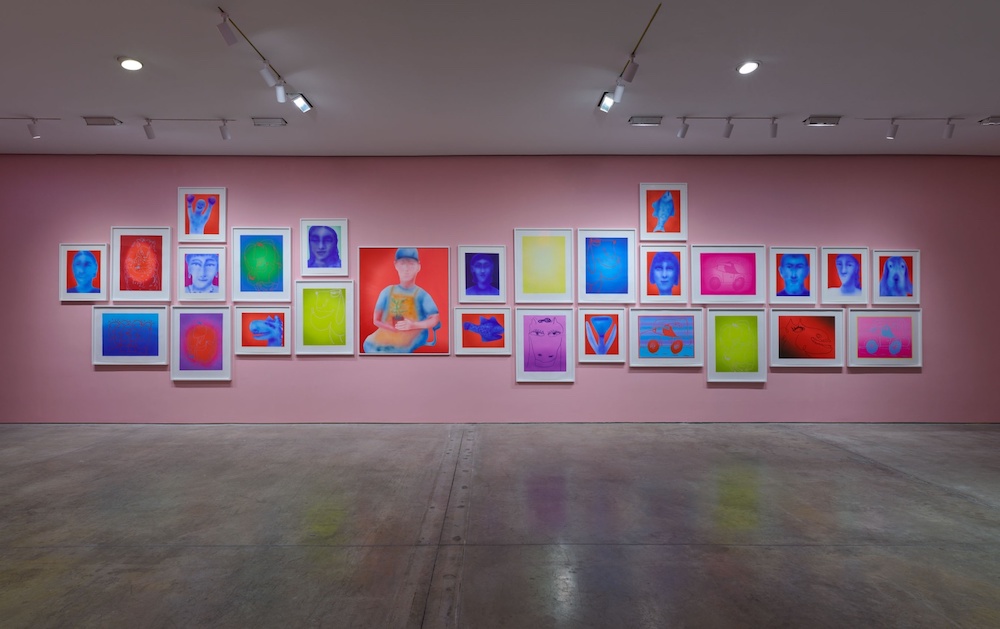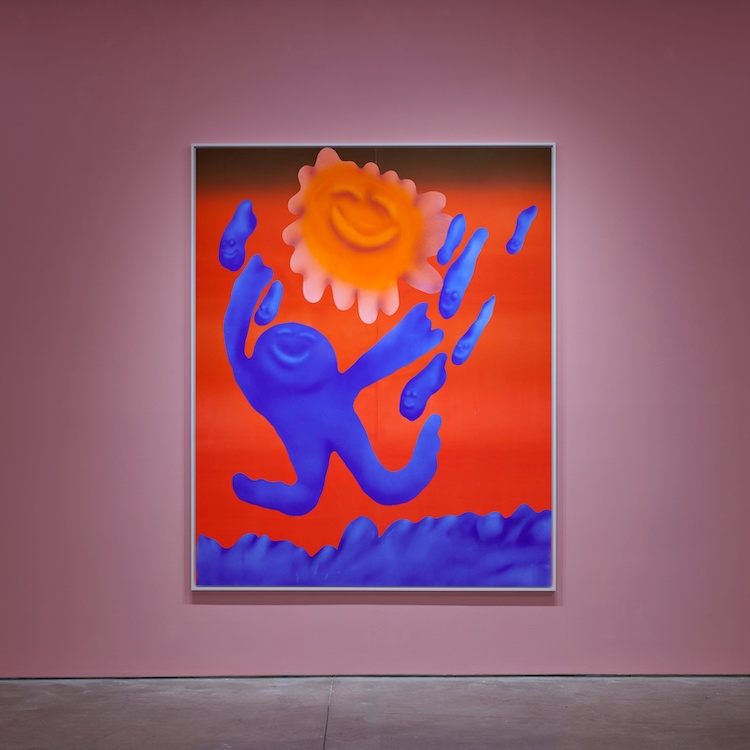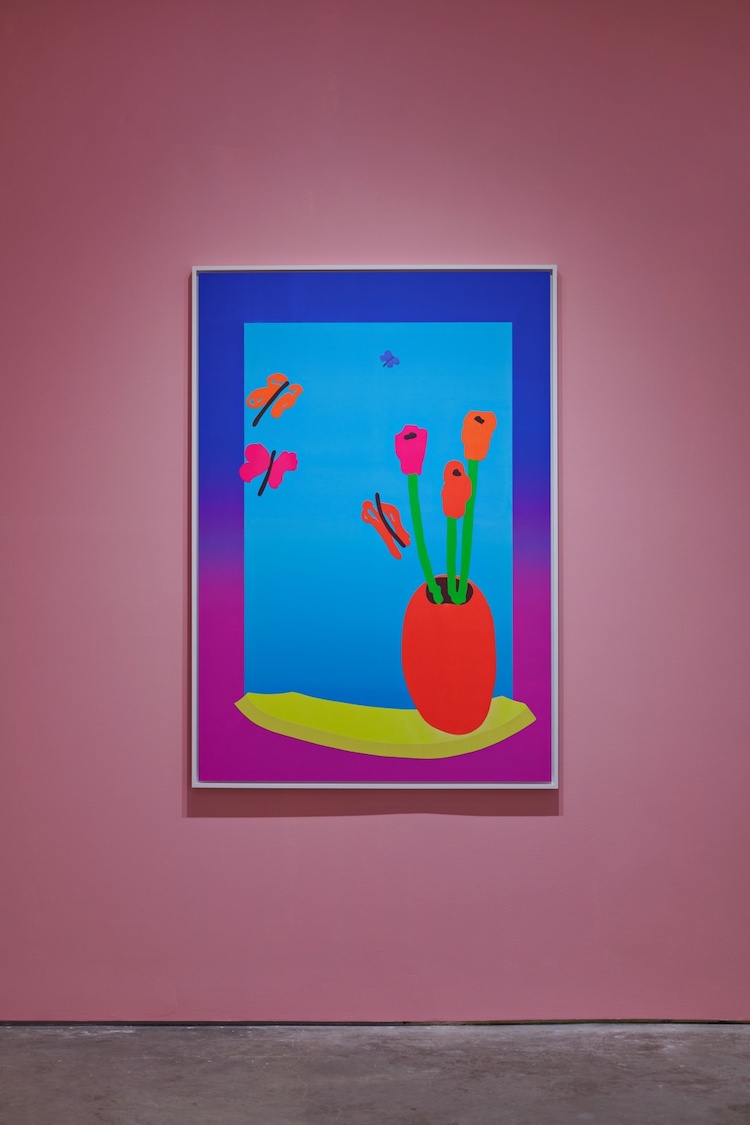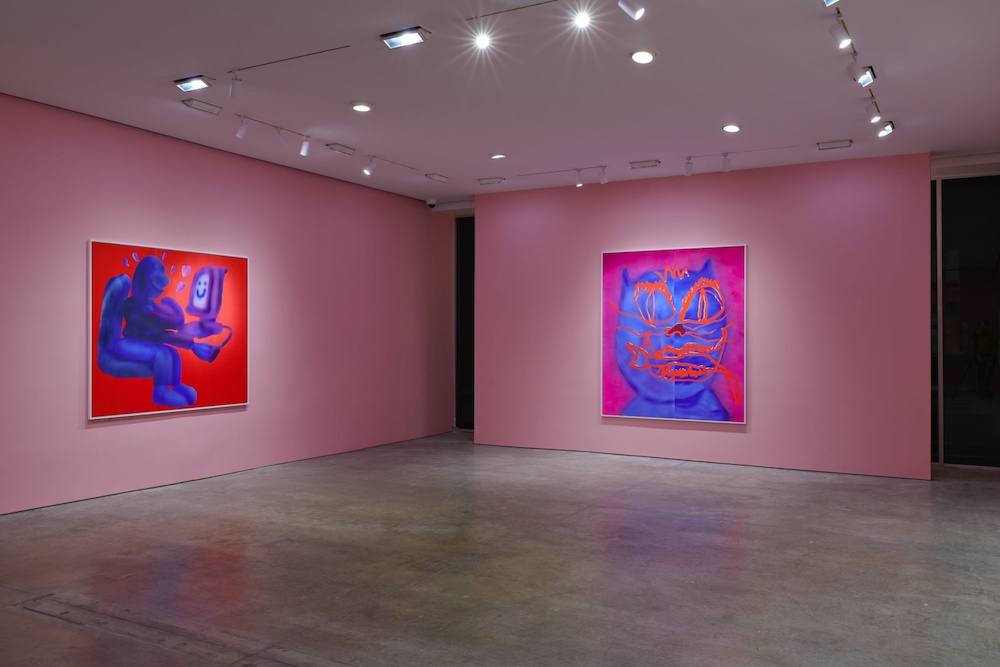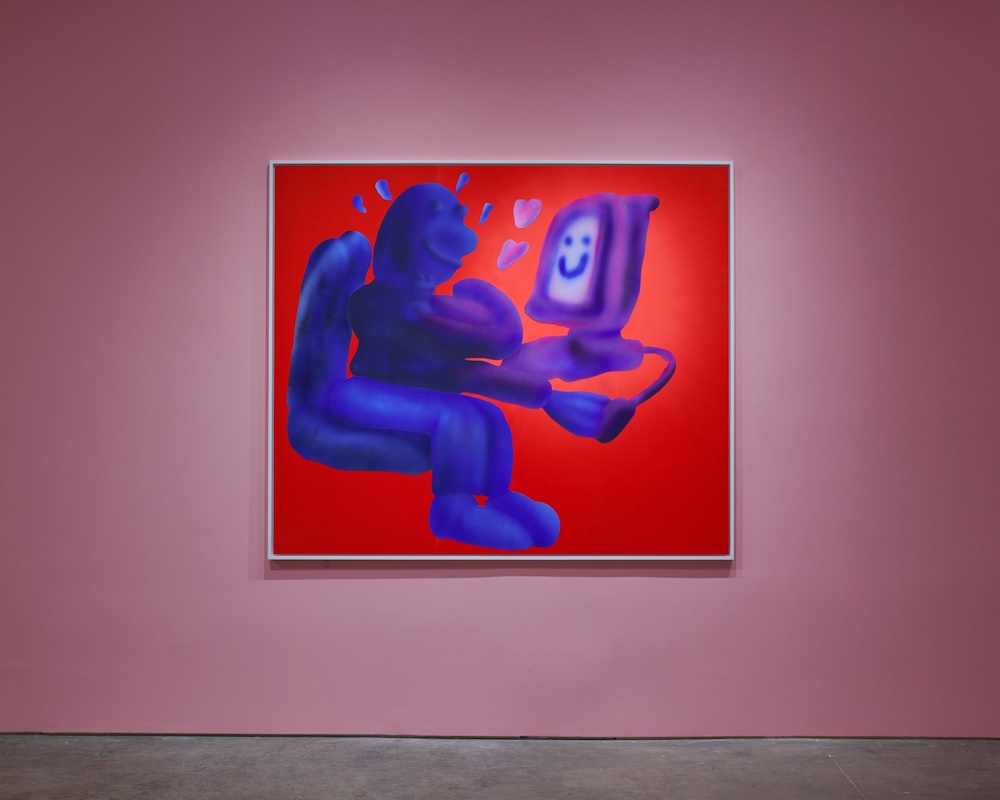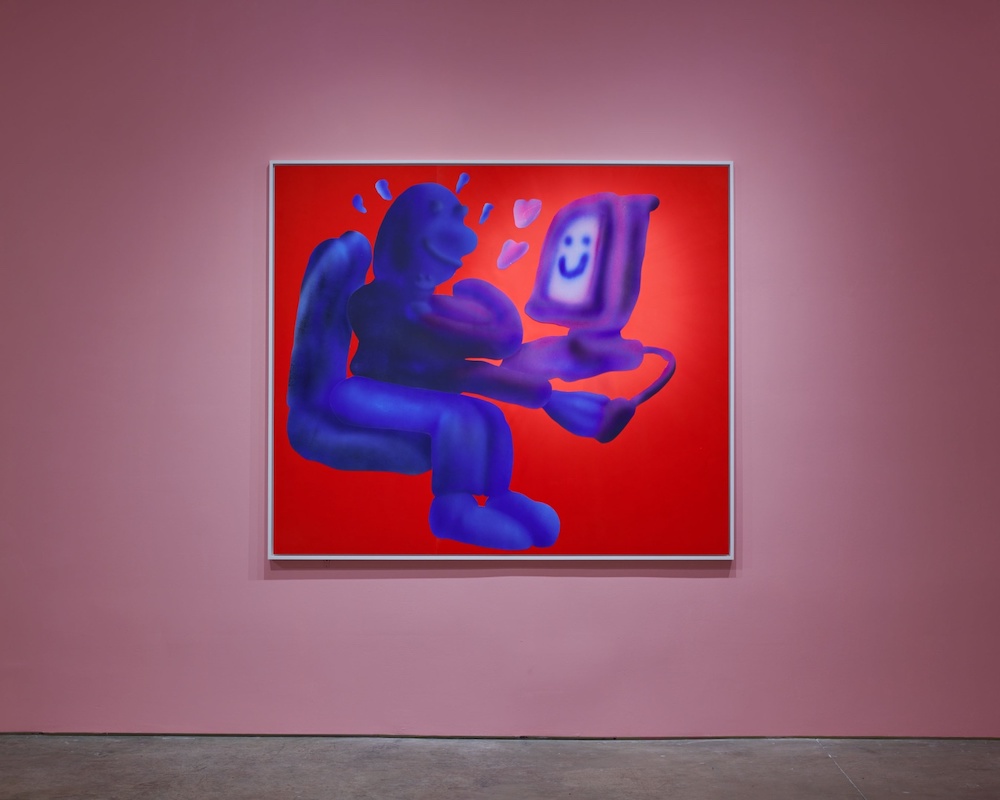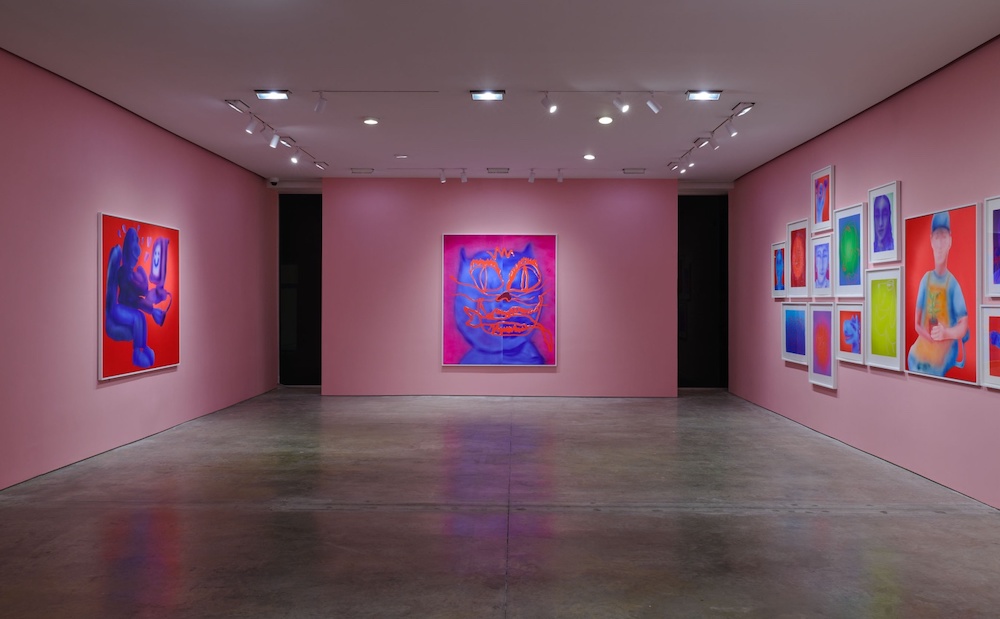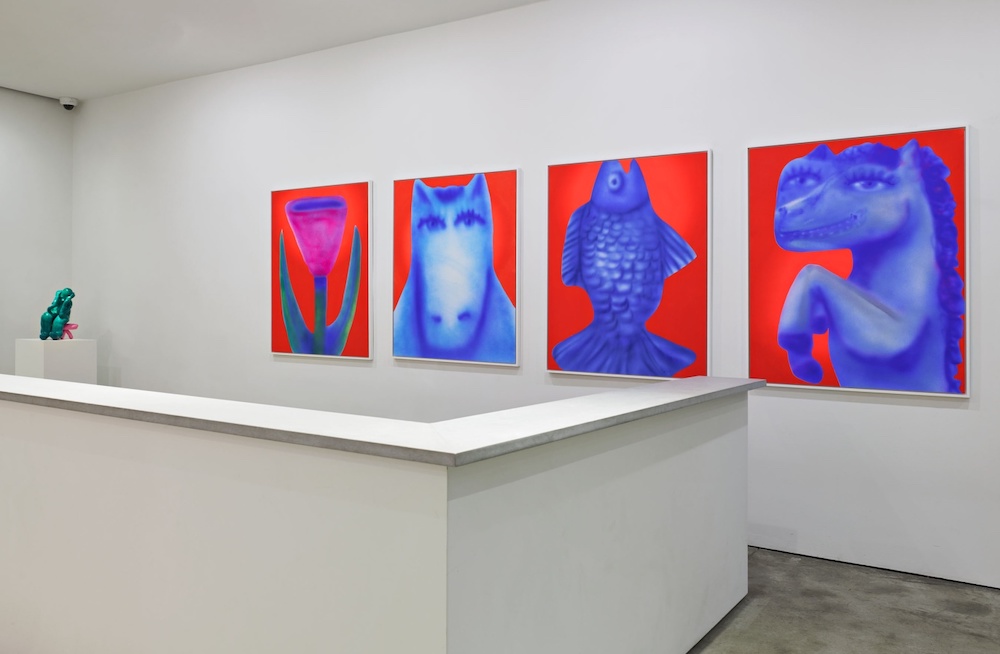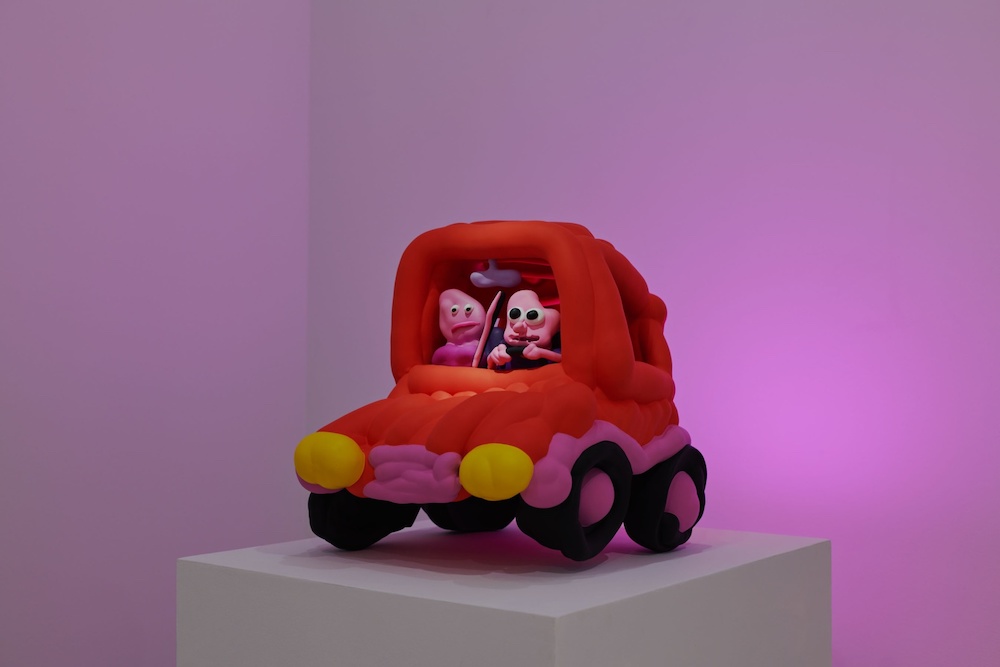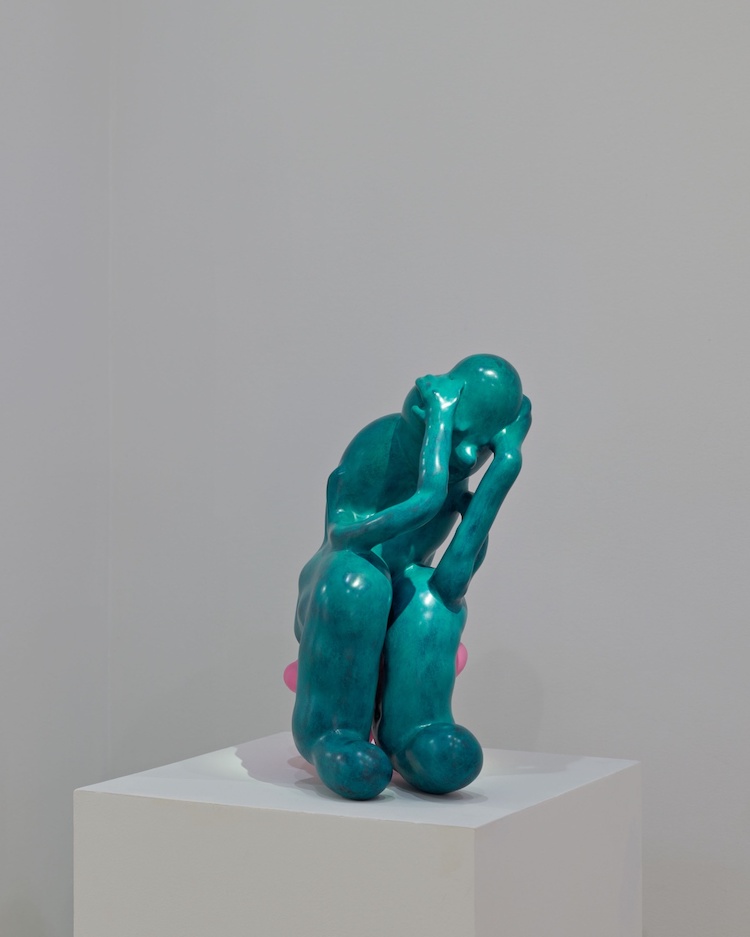The thing about Austin Lee is that everything he makes doesn't look like it was actually made by anyone but a computer. We have discussed this at length with Austin in our Radio Juxtapoz podcast and in our Juxtapoz x Superflat exhibition, this idea of analog to digitial to analog again, and now at Pace Prints, even an extra layer of analog. Austin Lee, over the course of his now influential career, as played with the idea of early 21st century computer painting programs and creating painting by hand in a reversal in our relationship with computers and technology, as if the exchange between our digital selfs and our "real" life is flipped. Below is the press release to Lee's new show, Good Impressions, on view at Pace Prints and explains the context of how Lee works on these editions. —Evan Pricco
As in his painting practice, Austin Lee makes prints with a hybrid digital and analog philosophy. Whether it is creating plates from digital drawings, or manually airbrushing large-scale works inspired by digital color and form, his mode of making evolves to recontextualize conventional methods. The exhibition will present unique prints and multiples made using a broad spectrum of digital and traditional techniques, in scales ranging from the intimate to the monumental.
With On the Way, a new sculptural multiple in an edition of 25, Lee shares with us the three-dimensional object originally created in virtual reality for the painting of the same name. The sculpture depicts the emotional crisis of the mundane on a family drive. The artist seeks to make visible what was once hidden in the original painting and allow the viewer to experience the work from all sides and angles. We see not just what’s in the painting but the full digital space within which the painting was created. Cast in bronze and painted in likeness to the artist’s signature airbrush finish, the sculpture imparts a deceiving weightlessness.
In this exhibition, Lee also returns to portraiture from life, a practice which he first explored during his studies at Yale. These works started as a playful take on Leonardo da Vinci’s sfumato technique and are painted directly from live sitters, hoping to catch a hint or impression of them. The nature of sitting for a portrait allows for an intimate moment of direct human connection that the artist finds especially important today and allows a brief moment of access into another person’s inner world.



